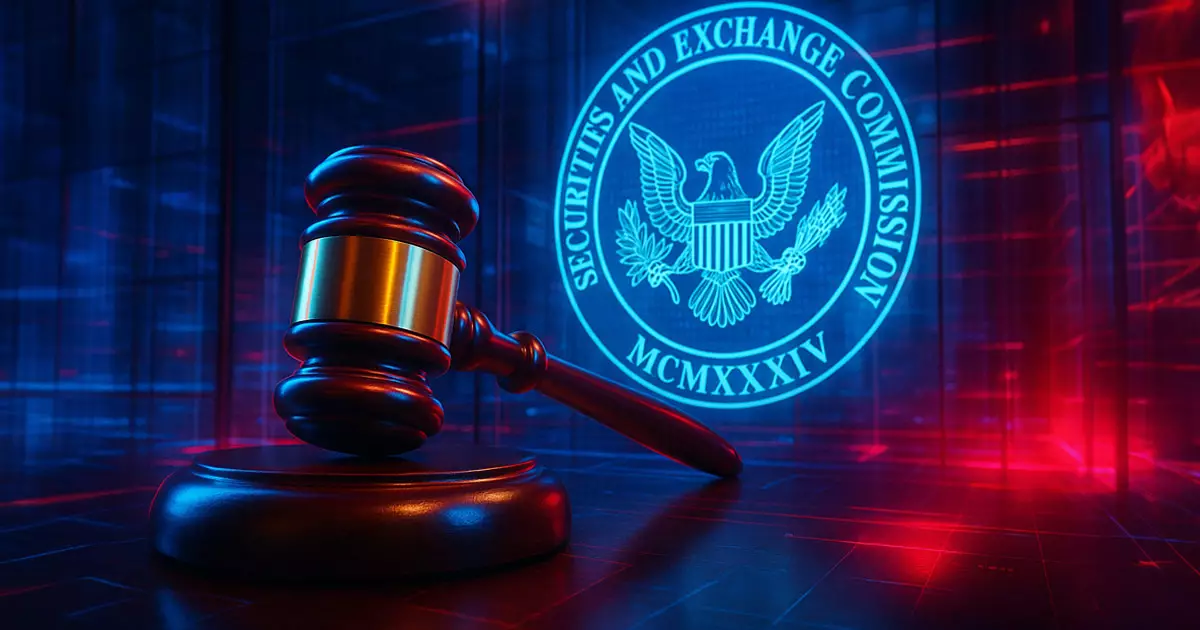In recent years, decentralized finance (DeFi) has emerged as a revolutionary force within the financial landscape. It challenges conventional banking systems, allowing users more control and flexibility over their finances. However, as the DeFi space burgeons, the lack of clear regulatory frameworks poses a significant obstacle to its sustainable growth. On April 18, the DeFi Education Fund (DEF) made a commendable attempt to address this critical issue by submitting a letter to the Securities and Exchange Commission (SEC) detailing five crucial principles aimed at establishing a token safe harbor that could drive innovation while safeguarding investors.
The Concept of a Token Safe Harbor: A Double-Edged Sword
The DEF’s proposal hinges on the creation of a time-limited exemption that enables token projects to move toward decentralization without being prematurely labeled as securities. This notion of a safe harbor is enticing, yet it is not without pitfalls. The danger lies in crafting regulations that could inadvertently hinder innovation by overly favoring certain technologies or consensus mechanisms. Regulatory bodies must tread lightly, employing a technology-agnostic approach that assesses risks based on activities rather than strict adherence to specific systems. Allowing creativity and open-mindedness in regulatory design is vital for fostering the growth of decentralized initiatives.
A Broad and Inclusive Escape Route for Projects
One bold recommendation from the DEF is that the eligibility for this safe harbor should extend beyond newly launched projects. It suggests a more inclusive approach, allowing previously launched tokens to qualify, provided they demonstrate commitment to decentralization. This perspective is refreshing; it acknowledges that valuable innovations can stem from various timelines. The criteria for evaluating a token should not be rigidly defined at inception. Rather, the focus should be on a project’s evolution and its ongoing efforts to decentralize. This shift could alleviate compliance fears for many projects that might have otherwise shied away from regulatory engagement.
Striking the Right Balance on Disclosure Requirements
While transparency is crucial in any financial ecosystem, the DEF rightly advocates for disclosures tailored to the realities of nascent development teams. Early-stage projects often grapple with a lack of resources and an urgency to innovate that can hinder comprehensive disclosure efforts. The DEF’s call for focused disclosure requirements ensures key information—ranging from governance structures to cybersecurity measures—is made public without overwhelming developers. Striking this balance is essential; after all, pushing developers toward rigid compliance requirements may backfire, stifling the very innovation regulators seek to protect.
Defining the Critical “Exit Test” for Decentralization
One of the cornerstones of the DEF’s proposal is the establishment of an “Exit Test” that would delineate when a project has sufficiently decentralized to no longer be classified as a security. This concept is vital for delineating the thresholds that projects must achieve. By setting parameters such as maximum transparency and user custody of assets—alongside an appropriate timeframe for meeting these benchmarks—the DEF aims to provide a practical pathway for token projects navigating an often murky regulatory landscape.
Protecting Market Participants While Sparks Fly
An often overlooked aspect of regulatory discussions is the importance of safeguarding secondary market participants. The DEF’s proposal emphasizes that while tokens are operating within the safe harbor, intermediaries such as exchanges ought not to undergo burdensome registration processes typical of traditional securities. This measure is crucial for fostering a vibrant trading environment, reducing legal ambiguities, and ensuring that innovation does not grind to a halt under the weight of regulation.
Legislation: The Ultimate Keystone for Clarity in Crypto
While the DEF advocates for an interim safe harbor, it astutely acknowledges the larger legislative necessity. Comprehensive regulations that would provide durable clarity must arise from Congress rather than relying solely on temporary carve-outs. The SEC’s role is undeniably important, but a cohesive legal landscape crafted through thoughtful legislative input will be pivotal in helping the DeFi ecosystem thrive. As the SEC grapples with these proposals, the ongoing engagement between regulators, developers, and investors seems essential for harmonious growth and clear operation within the realm of digital assets.
The DEF’s forward-thinking letter serves as a vital signal urging both regulators and developers to engage constructively. Only through open dialogue and inventive frameworks can we ensure that the promising realm of decentralized finance continues to innovate and evolve unencumbered by poorly conceived regulations.


Leave a Reply